|
"After" photo to the "before" of the home page. Breakfast with friends at home, the debris of the table when they leave, signs of happiness.
"Only connect." E. F. Forster Howard's End. What do these activities have in common?
Every year the cultural organization of the United Nations gathers to consider additions to their list of Intangible Cultural Practices. In 2010, France’s multi-course gastronomic meal, with its rites and its presentation, fulfilled the conditions for featuring on the list. They wrote... “The gastronomic meal of the French is a customary social practice for celebrating important moments in the lives of individuals and groups, such as births, weddings, birthdays, anniversaries, achievements and reunions. It is a festive meal bringing people together to enjoy the art of good eating and drinking. The gastronomic meal emphasises togetherness, the pleasure of taste, and the balance between human beings and the products of nature. Importance is given to the purchase of good, preferably local products whose flavours go well together; the pairing of food with wine; the setting of a beautiful table; and specific actions during consumption, such as smelling and tasting items at the table. The gastronomic meal should respect a fixed structure, commencing with an apéritif (drinks before the meal) and ending with liqueurs, containing in between at least four successive courses, namely a starter, fish and/or meat with vegetables, cheese and dessert. Individuals, called gastronomes, who possess deep knowledge of the tradition and preserve its memory, watch over the living practice of the rites, thus contributing to their oral and/or written transmission, in particular to younger generations. The gastronomic meal draws circles of family and friends closer together and, more generally, strengthens social ties.” (Gastronomic meal of the French) In 2016, the national dish of Tajikstan, (Oshi Palava) was added to the list. This communal dish of rice, vegetables and usually meat was hailed for bringing families together, securing friendships and solving arguments, it may even have helped end civil war! So what are you waiting for? Get out that diary, email, text or (old school) use the telephone and invite someone over. Comment below or (please) like 👍🏼
4 Comments
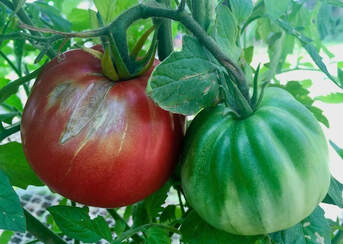 Beautiful tomato, heavy, plump and red, soft to the touch, slightly blemished due to a spate of rainy days. The season so far has been sparse, despite the borrowed bees in their Hilton-like structure in the garden. From this large healthy plant, we'll probably only get five tomatoes. Whatever, sliced, a touch of salt, covered in olive oil and ripped basil, this tomato makes a delicate entrée for two. Would we be prepared to pay for good tomatoes, soft-skinned, picked from the vine only when ripe? It's become a cliché to complain about the modern tomato. Is it our fault? I've looked into this. Vine-ripened tomatoes are NOT ripened on the vine. Sorry to crush your delusions. They should more rightly be called "cluster tomatoes" because they are a variety that grows that way. And don't they look lovely in the greengrocer's with their little green stems? You pay more, harvesting is trickier but there is no improvement in flavour. Furthermore, all bought tomatoes are bred for tough skins , which makes them easier to transport. (See doctoring tomatoes in post 28/12/2017.) How much more would we be prepared to pay? 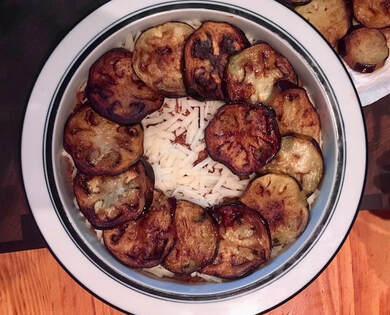 I have been playing with eggplant (aubergines), a vegetable with which I have a strained relationship. I love every dish I'm offered but rarely cook it myself, so here goes. I’ve now done a Japanese-style eggplant in miso, a Madhur Jaffrey recipe with eggplant, apple and chilli, the Turkish eggplant dish that made the Imam faint it was so delicious, melanzane parmigiana and this good-looking moussaka. The moussaka needed the minced lamb to be cooked with tomato, onion and cinnamon, the eggplant to be salted, drained and fried in olive oil, the béchamel to be prepared with milk and eggs, the cheese to be grated – all simple enough steps. Nonetheless I found I needed to spread the preparation of all the “bits” over a couple of days. The outcome was worth it but I was reminded of an observation made by friend, fellow chef and observer of gastronomy. “Traditional cooking assumes there is someone who will spend all day making something. This is not as dire as it sounds because the ‘men folk’ know that it takes all day, they taste the nutmeg, they know they can only have zucchini flowers in certain seasons and they know that maybe that day the sheets have not been taken to the river to be washed. Only if you have an appreciative audience will traditional cooking survive." Rosa Matto Comment below or Like 👍🏼 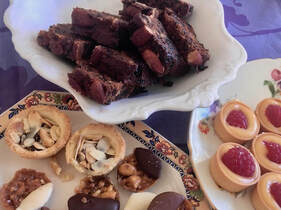 We receive an invitation to morning tea in the new year, ostensibly to help clear some left-overs, in particular the Christmas cake. Seven of us sit around a table set with Shelley teacups, plates and a glass of domestic bubbles. Bliss. Laura has been making this recipe for years. It was possibly the best I’ve ever had – texture, colour, flavour. Following modern trends, it was not covered in marzipan or snow-like icing, which I miss. I have a special bond with celebratory fruit cakes. On coming to England to marry my father, Maman took herself off to cookery classes. She was a top cook, from a family of good cooks, but she felt her repertoire lacked three dishes – Yorkshire pudding, Christmas cake and Christmas pudding. (I think there were some soused herrings in there somewhere, too.)
She rightly thought the French Bûche de Noël lacked gravitas and substance. She was so right. How can anyone not like Christmas cake? (I mean of course a well-made one, not pale and doughy.) It has tradition, staying power, colour and wholesome dried fruit. And I’ll say it, anyone who does not like marzipan loses my respect. When doing weddings at the restaurant I couldn’t understand why the fruitcake was passed over for the dreaded chocolate mud cake. (Urrrgh!) As Pauline Hansen would say, “Please explain”. Please tell me why the fruit cake has lost favour. Rescue the fruit cake? Comment below. 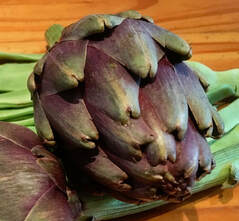 As Rick Stein helps a Sicilian nonna to “peel” artichokes (Mediterranean Adventures) he alerts us to a passage from Kingsley Amis’ 1969 novel The Green Man (a sardonic and witty writer with a nasty streak, writing about a rather nasty man running a small hotel). One critic called it “Fawlty Towers with sex and ghosts". Here, landlord Maurice sits down to lunch with his wife Joyce and friends. “Joyce had put up a cold collation: artichoke with a vinaigrette, a ham, a tongue the chef had pressed himself, a game pie from the same hand, salads and a cheese board with radishes and spring onions. I missed out the artichoke, a dish I have always tended to despise on biological grounds. I used to say that a man with a weight problem should eat nothing else, since after each meal he would be left with fewer calories in him than he had burnt up in the toil of disentangling from the bloody things what shreds of nourishment they contained. I would speculate that a really small man, one compelled by his size to eat with a frequency distantly comparable to that of the shrew or the mole, would soon die of starvation and/ or exhaustion if locked up in a warehouse full of artichokes, and sooner still if compelled besides to go through the rigmarole of dunking each leaf in vinaigrette. But I did not go into any of this now, partly because Joyce, who liked every edible thing and artichokes particularly, always came back with the accusation that I hated food.” (Incidentally he does hate food as he hates life, everything and everyone he comes across. Joyce, his wife gets her own back, leaves him and runs off with his mistress.) How are you going with your artichokes? Comment below. |
Categories
All
|
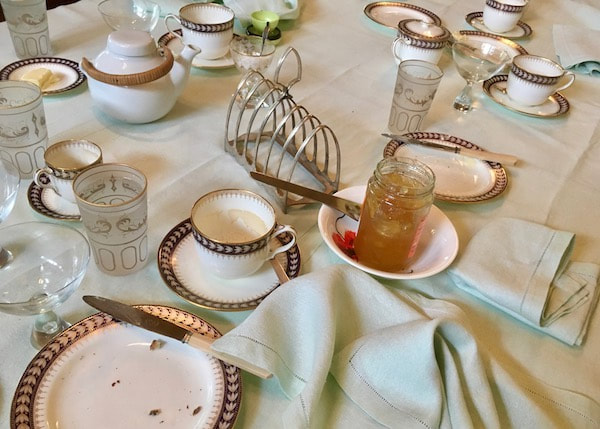






 RSS Feed
RSS Feed
